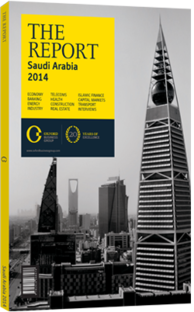Stay for a while: New visa regulations give Umrah pilgrims the chance to extend their visit and explore the Kingdom
Good news came for pilgrims and the tourism industry in November 2013, when it was announced that a new visa allowing Umrah pilgrims to travel domestically after completing their religious rituals would be issued for the 2013/14 season, a move which is expected to be a boon to tourism and associated industries.
Often referred to as the “lesser pilgrimage”, the Umrah is not incumbent on Muslims who are financially and physically able, as the Hajj is, but it is nonetheless highly recommended, and the government expects a total of some 6m foreign pilgrims from around 70 countries to visit throughout 2013/14 season, the end of which coincides with the completion of Ramadan in July. A total of around 1.7m visas had already been issued as of mid- January 2014, with 953,000 pilgrims having visited by the end of that month.
Known officially as the Extended Umrah Tourism Programme and colloquially as the “Umrah plus” visa, the scheme, designed by the Saudi Commission of Tourism and Antiquities (SCTA), is a joint endeavour between the Ministries of Interior, Foreign Affairs and Hajj. It came into effect in December 2013. The new visa is available for passport holders from 65 countries through both companies approved by the SCTA and licensed Umrah tour operators that have gained an additional licence, also from the SCTA.
A Month More
According to the SCTA, the Umrah plus programme converts a normal Umrah visa into a 30-day tourism visa on expiry, which will allow pilgrims to travel beyond Makkah, Medina and Jeddah, the cities to which they are restricted under a normal Umrah or Hajj visa. With the spiritual and ritual importance of the Holy Cities a continual factor drawing visitors to Saudi Arabia in large numbers, allowing a percentage of them to stay on and travel within the Kingdom will have a profound impact on the development of the tourism industry as a whole. Tourists spent some SR61.8bn ($16.5bn) in the Kingdom in 2013, with pilgrims accounting for a large proportion of this. Extending their trips would further boost receipts and the positive effects of this would be felt throughout the economy. As Salah Al Bukhayyet, vice-president for investment and development at the SCTA, told OBG, “If we offer the extended visa to 10% or 20% of the million or so monthly Umrah visa applicants, we will see a considerable rise in tourism spending in the Kingdom.”
The government is investing heavily in some 30 museums and religious attractions in Makkah and Medina, as well as heritage hotels, resorts and other tourism offerings. It is hoped that the increase in the number of tourists travelling in the Kingdom under this new programme will further drive the development of sites as well as relevant infrastructure, and will help familiarise those working in the industry in Saudi Arabia with how to deal with foreign tourists.
Limits
The new regulation does not, however, apply to Hajj visas, nor is it, as some had thought, available as a stand-alone tourism visa, meaning that visa-related access issues remain a barrier for non-Muslim tourists and Muslims not undertaking the Umrah.
This can be easily resolved, according to Al Bukhayyet, who told OBG that the regulations and logistics of the tourist visa are not the problem, explaining that “an integrated electronic system involving all of the relevant organisations is in place”, and that it is simply a question of turning it on or off.
The main barrier at the moment, Al Bukhayyet went on to say, is the fact that “the offerings and infrastructure are not yet up to the expectations of globe-travelling tourists, who have been to some of the premier sites around the world; once this issue is resolved the visa switch can simply be turned on”.
The SCTA is working hard to make this happen. With numerous sites and infrastructure projects already providing options for domestic travellers, it is hoped that the increased tourism resulting from the Umrah plus programme will help foster the growth of the nascent industry without overwhelming it, enabling the necessary development to take place and laying the foundations for further visa liberalisation in the years ahead.
You have reached the limit of premium articles you can view for free.
Choose from the options below to purchase print or digital editions of our Reports. You can also purchase a website subscription giving you unlimited access to all of our Reports online for 12 months.
If you have already purchased this Report or have a website subscription, please login to continue.

